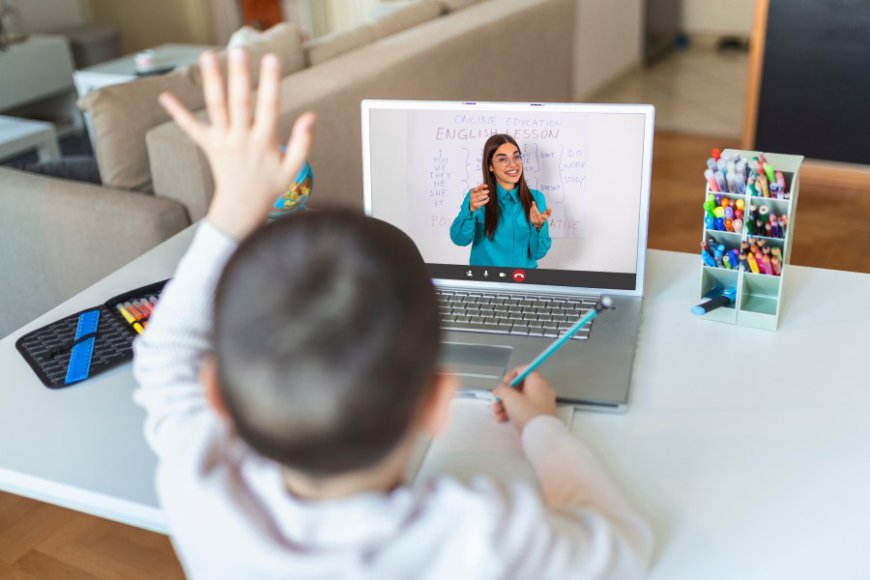Actually, research supports the COVID school closures
Listening to critics of teachers' unions, you’d never guess that all we were trying to do during COVID was protect our students and their families.

When the COVID lockdowns began and our schools closed down, “In effect, officials steered a car off the road, threw a cinder block on the accelerator, then jumped out of the vehicle with passengers still in the back,” says journalist David Zweig.
Ben Austin, founding director of Education Civil Rights Now, writes that United Teachers Los Angeles “wielded its considerable power” to “trap” students and keep them home “indefinitely.” And Corey DeAngelis of the CATO Institute says teachers' unions “def[ied] evidence” on the virus, instead “prioritizing union demands over kids.”
Listening to critics of teachers' unions, you’d never guess that all we were trying to do during COVID was protect our students and their families.
That the COVID school closures were wrong and that teachers' unions were to blame is now a fundamental tenet of modern conservatism. Yet a considerable body of research has emerged that supports the basic contentions teachers' unions have been making all along.
Critics’ principal assertion is that closing schools was unnecessary because children were at little risk of serious harm from COVID. Teachers' unions asserted that, because students in large public school districts are disproportionately low-income, they often live in apartments with extended families and multiple generations, leaving these families particularly vulnerable to the virus, even if their school-age children were asymptomatic.
A cohort study of over 165,000 American households containing both adults and children confirms this assessment, finding that among all “household transmissions … 70.4 percent started with a pediatric index case.” The authors of the study, published in the American Medical Association’s “JAMA Network,” conclude: “We discerned an important role for children in the spread of viral infection within households during the COVID-19 pandemic, heightened when schools were in session, supporting a role for school attendance in COVID-19 spread.”
Teachers' unions also pointed to racial disparities in relation to school closures, for which critics, to this day, give us considerable grief. The student body at public schools is heavily minority, and we asserted that COVID would hit minority groups harder than whites.
The study “COVID-19–Associated Orphanhood and Caregiver Death” confirms this view. Published in “Pediatrics,” researchers found that from April 1, 2020, through June 30, 2021, over 140,000 American children “experienced the death of a parent or grandparent caregiver,” and that the frequency of such losses was significantly higher among “children of racial and ethnic minority groups compared with non-Hispanic White children” — in some instances as much as 4.5 times higher.
Another common criticism is that the school closures were ineffective. Research contradicts this, demonstrating that school closures did play a significant role in reducing the spread of COVID. The “Estimating the impact of school closures on the COVID-19 dynamics in 74 countries” study found that school closures “reduced peak hospital occupancy pressure in nearly all countries, with 72 out of 74 countries (97 percent) showing a positive median estimated effect.”
That study, published in “PLOS Medicine,” a peer-reviewed medical journal from the Public Library of Science, also found that while results of school closures varied from country to country, “school closures achieved moderate to significant [COVID] reductions in most settings over the period 2020 to 2022.”
Similarly, the study “School closures during COVID-19: an overview of systematic reviews,” published in the British Medical Association’s “BMJ Evidence-Based Medicine,” found both “school closures and in-school mitigations were associated with reduced COVID-19 transmission, morbidity and mortality in the community.”
Critics also assert that unions shut the schoolhouse door on protesting parents. Austin accuses us of “bullying” parents into submission, while Zweig, author of “An Abundance of Caution: American Schools, the Virus, and a Story of Bad Decisions,” states, “parents were really kept out of the decision-making process.” The facts contradict this narrative.
A year after COVID hit, two nationally representative polls found that between two-thirds and three-fourths of parents believed their children were receiving the proper type of instruction. “Chalkbeat,” an education-oriented news organization that analyzed the data, explained, “[P]arents’ preferences are varied, with the largest group wanting their child to learn from home full-time.” The organization noted that most parents wanted to continue with the type of instruction their children were then receiving — “an indication that schools nationwide have been responsive to families as they craft their instructional plans.”
In March of 2021, I conducted a written survey of my own students and learned that only 15 percent of their parents wanted them to return to school, which was consistent with these studies’ findings. Had schools opened in the face of this parental disapproval, many students would not have attended, and we’d have faced the disruptive chaos of classes split between in-school and at-home learners.
Moreover, if schools are open, state law obliges educators to enforce attendance requirements. Schools would then have been in the position of demanding that parents send students to school even though the parents, believing this could endanger their families, may have resisted.
Zweig, Austin and others are correct that students' learning loss from the closures was considerable. Did the benefits outweigh the costs?
Unlike our critics, I do not presume to know what history's verdict will be. I do know that, in the context of the time, what we did was not unreasonable, and that we acted in good faith to protect our students, their families and their communities.
Glenn Sacks teaches social studies and is a United Teachers Los Angeles representative at James Monroe High School in the Los Angeles Unified School District.
What's Your Reaction?
























